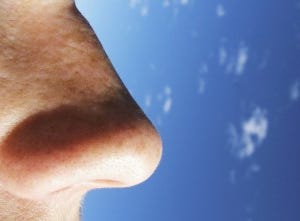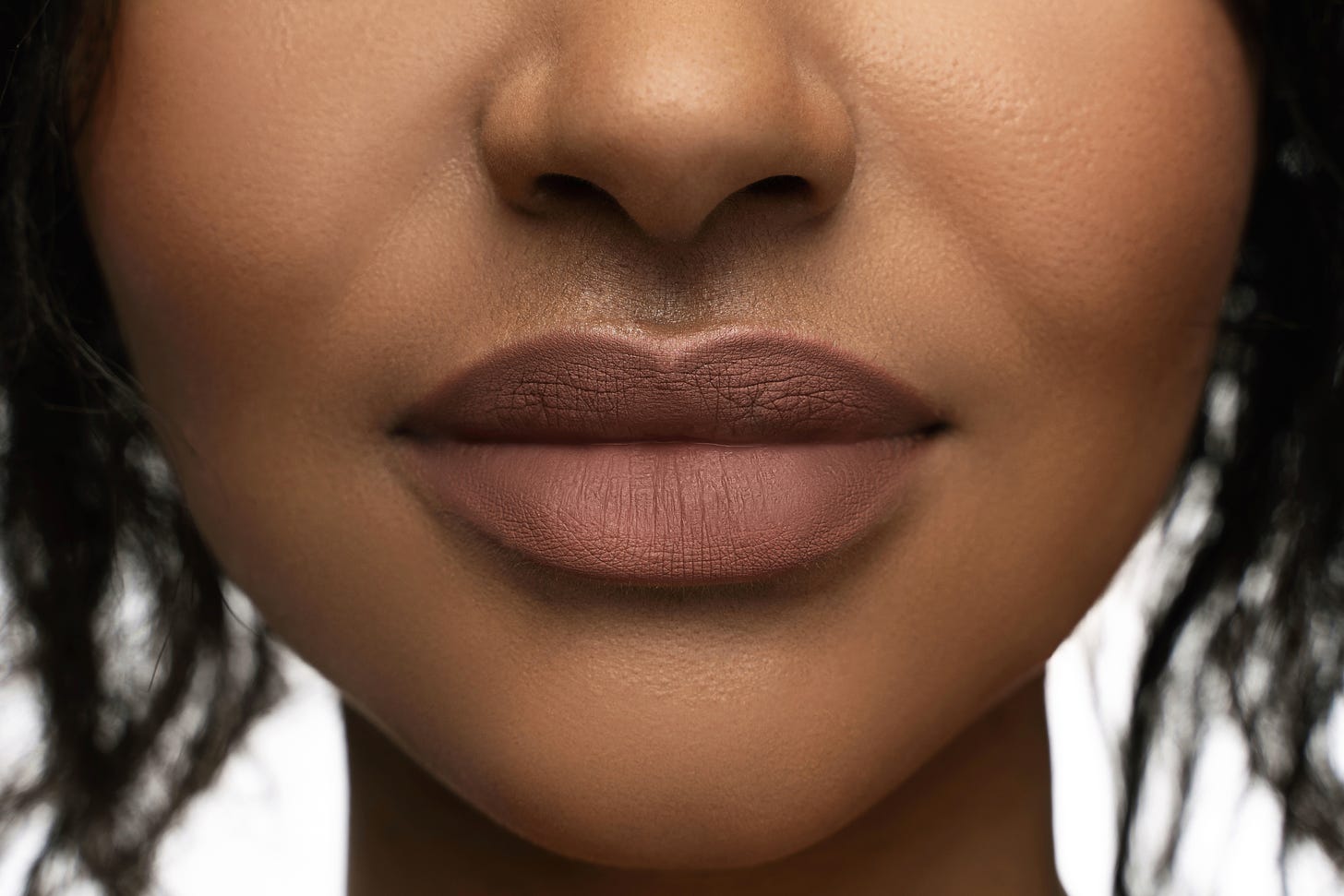New Virtual Reality Tool Improves Breathing
Last week, I wrote about the novel discovery of a way to detect Parkinson’s disease in nocturnal breathing years before the disease manifests. In that study, collaborators from myriad settings created an AI algorithm and a device that people wear while sleeping. The algorithm detects breathing anomalies using sound waves that bounce off the body as people breathe during sleep. At the end of the piece, I wrote,
“If disordered breathing can cause intestinal permeability issues, motor dysfunction, and neurocognitive decline, what might breathing be able to offer as a therapeutic tool for the prevention and treatment of gut disorders and neurodegenerative diseases, particularly when caught early?”
The very next day, while perusing studies related to body illusions and the sense of body ownership, I found a review paper Published in 2022, the same year as last week’s study, this one made me jump up from my desk, throw my arms into the air, shout “YESSSS!!!” and rapidly pace the hallway back and forth for several minutes.
The paper’s title is Breathing control, brain, and bodily self-consciousness: Toward immersive digiceuticals to alleviate respiratory suffering. Right off the bat, the authors basically say (in that jargon-y way they favor) that breathing control relates not just to alleviating respiratory distress—the very kind we explored last week—but to supporting bodily self-consciousness.
I’ll lay out the series of studies that inspired the review analysis. These studies come from an emerging field called respiratory neuroscience. (It gives me goosebumps to write those words.)
The review paper is complex, and integrates the fields of embodiment and breathing disorders with respiratory neuroscience.
I’m going to simplify the review paper here to illuminate its key points. That said, it contains other key revelations about the relationship between breathing and embodiment.
What Makes Breath Unique Among Body Functions?
First, let’s take a quick look at the earlier studies that inspired the review.
You’ve likely heard people say that among autonomic functions, breathing is unique because it can be both automatic and voluntarily controlled. This is true; and yet, there’s more to the uniqueness of breathing.
Breathing is intimately connected to embodiment. Through myriad respiratory structures (lungs, diaphragm, bronchial tree, and more), breathing creates a rich line of sensory communication from the body to the brain and back.
Many messages that our respiratory structures send to the brain relate to interoception, our capacity to receive, understand, respond to, and regulate signals that come from our bodies. Breath is inherently interoceptive.
Breath is also proprioceptive. Every time we breathe, muscles contract. Inter-thoracic and abdominal pressure changes. (Pressure is proprioceptive).
Breathing is movement in itself (think rib cage volume changes, skeletal muscle contractions, joint motility). It also functions as a source of bodily movements.
In this section of my article many moons ago on proprioception, I talked about how simple, rhythmic movements like walking, running, swimming, chewing, and breathing, are orchestrated by groups of cells in the spinal cord called central pattern generators. These neural networks, organize movement without sensory input or direction from the brain—which means underneath our conscious awareness.
The brainstem is home to respiratory central pattern generators. These CPGs, researchers say, actually predate the evolution of the lungs and air breathing. Breath is an ancient phenomenon.
The thalamus, which is a relay station of sorts between the body and the brain, likely plays a role in the process that makes normal breathing happen under the surface of our awareness.
And, say researchers, it may also factor into the pathophysiology of dyspnea, a shortness of breath and the aversive feeling that it’s hard to get a full breath. Dyspnea may also play a role in states of anxiety and hyper-arousal during sleep.
Body Illusions and the Therapeutic Power of the Breath
In this article, I described the Rubber Hand Illusion, in which a person feels a brush stroking their hand, which is hidden from sight. At the same time, they visually see a rubber hand being stroked with the same pressure and tempo.
The combination of visual, touch-related, and proprioceptive signals causes the brain to “adopt” a rubber hand as part of the viewer’s body. In this sense, vision becomes a stronger sense and “captures” sensation to create a new experience of owning a rubber hand. The Rubber Hand Illusion shows that body ownership is flexible; it expands in important ways, such as the adoption of a prosthetic arm or hand.
But researchers didn’t stop at the rubber hand.
Not long after they began to study the adoption of the rubber hand as part of a person’s body, researchers decided to do the same with the entire body.
Enter the Full Body Illusion.
Using simultaneous vision and touch, researchers induced the illusion that an artificial body was one's own. This effect was so strong that people could experience being in another person's body and, remarkably, facing their own body and shaking hands with it.
Scientists began to wonder: Could the illusion effect be induced by combining vision not with touch, but with respiratory signals performed in virtual reality?
A group of scientists from the University of Rome and other collaborators combined recordings of breath with virtual reality. They found that indeed, making a virtual avatar breathe like participants’ real bodies gave participants an illusory sense of ownership and agency over the avatar. They called this the “embreathment” illusion.
Their results showed that breathing is nearly as important as visual appearance in determining body ownership. And importantly, breath is more important than any other cue for creating the sense of body agency.
The same year, a group of scientists lead by Olaf Blanke, the principal investigator in today’s review paper, conducted a similar experiment using an outline that flashed around the avatar in synchrony with participants’ breathing. Their results corroborated the findings of the Rome study.
I knew of the embreathment studies thanks to my research for the book and the chapter on body ownership. But what I didn’t know, and what absolutely knocked my socks off, was that the scientists crossed over from exploration to intervention.
The Full Body Illusion using the Breath Virtual Reality
And now, to the remarkable review paper. (Cue a tiny drumroll.)
Olaf Blanke’s lab asked a key question: If mapping breath patterns onto a virtual avatar caused participants to feel ownership over the avatar’s body, could this change the relationship we have with our breath?
In a 2021 study, Blanke’s lab employed an immersive virtual reality experience with a VR-compatible smartphone to improve breathing in patients suffering from post-Covid-19 induced dyspnea (shortness of breath). In virtual reality, they could see a gender-matched virtual body lying on a bed in a position similar to theirs. They virtual body displayed the visual effect of breathing movements, e.g. the chest.
After the intervention, participants became more consciously aware of their breathing patterns—which, you’ll remember, usually occur below the surface of awareness. (More on that in a moment.)
They reported a significant increase in breathing comfort.
They also reported an improved sense of agency over their breathing.
So breathing offers the full suite of embodiment: interoception, proprioception, body ownership, and body agency.
While additional studies are needed, the authors expressed confidence that immersive virtual reality could provide a low-cost, at-home, more widely accessible intervention that could be used repeatedly over time to improve breathing not only for people with dyspnea, but also chronic obstructive pulmonary disease, or COPD.
The authors of the review paper mention the possibility of performing voluntary breath holds and complex sequences of respiratory exercises with only a small amount of learning.
I couldn’t help but think of this cohort of studies in relationship to last week’s study.
It called to mind for me the growing prevalence of mouth-taping, a practice in which people place a piece of tape over their mouths during sleep (or exercise) to train themselves to breathe through the nose.
The ability to bring breathing patterns to conscious awareness and to change these patterns opens a window into interventions to improve nocturnal breathing difficulties like obstructive sleep apnea.
Breathing disorders, as I talked about just a week ago, play a role in Parkinson’s and Alzheimer’s diseases.
Dyspnea is also a factor in anxiety and chronic pain.
The term digiceutical in the review paper’s title refers to a digital therapeutic tool that improves health. Digital therapeutic tools may have the potential to improve not just waking but nocturnal breath. They may have the potential to improve sleep and with it, to lower the gut-related inflammation that transgresses the blood-brain barrier and causes brain disease.
Why is this important?
Picture what happens in a private yoga therapy session or even a group class when someone demonstrates breathwork. You breathe at the same time as the embodiment guide—and if you’re there live, in the same rhythm as the other people breathing alongside you.
We’re not far from a time in which breathwork enters the mainstream, and has the potential to influence anxiety, depression, chronic pain, gut function, and brain health. (See this article for a review of how gut health affects brain health.)
To my mind, it doesn’t get a whole lot more exciting than that.
Sources:
The title of the study is: Betka, S., Adler, D., Similowski, T., & Blanke, O. (2022). Breathing control, brain, and bodily self-consciousness: Toward immersive digiceuticals to alleviate respiratory suffering. Biological psychology, 171, 108329. https://doi.org/10.1016/j.biopsycho.2022.108329
Which, say evolutionary researchers, predate the evolution of the lungs: Hoffman, M., Taylor, B. E., & Harris, M. B. (2016). Evolution of lung breathing from a lungless primitive vertebrate. Respiratory physiology & neurobiology, 224, 11–16. https://doi.org/10.1016/j.resp.2015.09.016
A group of researchers led by Olaf Blanke: Adler, D., Herbelin, B., Similowski, T., & Blanke, O. (2014). Breathing and sense of self: visuo-respiratory conflicts alter body self-consciousness. Respiratory physiology & neurobiology, 203, 68–74. https://doi.org/10.1016/j.resp.2014.08.003
Using simultaneous vision and touch, researchers induced: Petkova, V. I., & Ehrsson, H. H. (2008). If I were you: perceptual illusion of body swapping. PloS one, 3(12), e3832. https://doi.org/10.1371/journal.pone.0003832
A group of scientists from the University of Rome and other collaborators: Monti, A., Porciello, G., Tieri, G., & Aglioti, S. M. (2020). The "embreathment" illusion highlights the role of breathing in corporeal awareness. Journal of neurophysiology, 123(1), 420–427. https://doi.org/10.1152/jn.00617.2019 See also: Betka, S., Canzoneri, E., Adler, D., Herbelin, B., Bello-Ruiz, J., Kannape, O. A., Similowski, T., & Blanke, O. (2020). Mechanisms of the breathing contribution to bodily self-consciousness in healthy humans: Lessons from machine-assisted breathing?. Psychophysiology, 57(8), e13564. https://doi.org/10.1111/psyp.13564 See also: Adler, D., Herbelin, B., Similowski, T., & Blanke, O. (2014). Breathing and sense of self: visuo-respiratory conflicts alter body self-consciousness. Respiratory physiology & neurobiology, 203, 68–74. https://doi.org/10.1016/j.resp.2014.08.003
In a 2021 study, Blanke’s lab employed an immersive virtual reality experience: Betka, S., Oliver, K., Jemina, F., Florian, L., Sylvain, C., Aline, S., Thomas, S., Paola, S., Bruno, H., Dan, A., & Olaf, B. (2022). Virtual reality intervention alleviates dyspnea in patients recovering from COVID pneumonia. European Respiratory Journal, 60(suppl 66). https://doi.org/10.1183/13993003.congress-2022.1205






